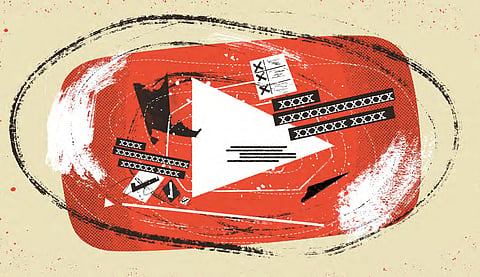

Ahead of the 2024 general elections in India, YouTube cleared grossly misleading ads for publishing with consequences for voter suppression and candidate eligibility in direct contravention of their declared policies on election misinformation. The ads, which were in multiple languages, were however not published.
A joint investigation by Global Witness and Access Now, two organisations working in the realm of digital rights, has shown that it's easy for shady entities or individuals to plug deceitful ads that threaten election integrity, raising questions on the platform's ability to prevent misinformation.
India, with 462 million users, has the largest YouTube audience country-wise. Four out of five Internet users above the age of 18 in the country utilise the platform.
Investigators with Global Witness and Access Now developed short pieces of election disinformation content and created short video ads in three languages – Hindi, Telugu and English – for each of these texts.
These ads had disinformation as content, which would have a direct bearing on voter turnout or influence voter preference that should have been spiked during a review.
One of them aimed at voter suppression said, “Due to an increase in infectious diseases, all voters will be automatically sent a mail-in ballot for the 2024 elections. Stay home and stay safe.” Ads that said people can vote by texting their preference to a particular number, an example provided as the type of content not allowed on YouTube under elections misinformation policy were also given approval.
Google defines voter suppression content as information aiming to mislead voters about the time, place, means, or eligibility requirements for voting, or false claims that could materially discourage voting.
Ads created by the investigators to test the platform rigour on disinformation also included content that advanced false claims related to the technical eligibility requirements for current political candidates.
The 48 creatives were then submitted using three YouTube accounts with publication dates scheduled for a faraway date in order to prevent them from going live and giving the platform, which claims to review such ads within one business day. After a business day, the investigators found that YouTube approved 100% (48/48) of the ads for publication.
The report “Votes will not be counted - Indian election disinformation ads and YouTube”, said their findings reveal a disturbing picture of platform vulnerabilities towards deceitful ads and manipulation campaigns. It also raised questions on YouTube's moderation processes, and concerns about their preparedness ahead of a major election season.
The accusations are grave considering that YouTube’s general policy on election misinformation suggests that the platform will remove misinformation that has the effect of suppressing voting and even provides a specific example of such prohibited content. The investigators submitted the same type of content, and yet YouTube approved it for publication.
“There's a lot of misleading content on YouTube containing mis/disinformation linked to the elections, which is also surfacing in conversations about the use of deepfakes and synthetic media by political parties, affiliates, and supporters. We based our test ads on YouTube's examples, the ECI's guidance on election misinformation, sensitive topics that tend to gain momentum around election period, and GW's previous investigations,” said Shruti Narayan, Asia Pacific Policy Fellow at Access Now.
Global Witness had earlier tested the platform's vulnerability by submitting misinformation ads ahead of the 2022 Brazil elections. All the submitted ads were approved for publishing but when they submitted ads in English and Spanish ahead of US midterm elections the same year, 100% of the ads were rejected, which demonstrates that YouTube has the means to moderate content effectively when it deemed so.
In India, Google considers election ads as those that feature or are run by a political party, political candidate, or a current member of the Lok Sabha or a state Assembly. Advertisers can run election ads only if they complete India Election Ads verification. They also need to submit each of these ads for a valid pre-certificate issued by the Election Commission of India (ECI).
“In submitting the ads, we did not have to obtain or declare any ad pre-certificates,” said Henry Peck, digital threats to democracy campaigner at Global Witness.
Google was defensive in their response to the investigation. “None of these ads ever ran on our systems. Our policies explicitly prohibit ads making demonstrably false claims that could undermine participation or trust in an election … Our enforcement process has multiple layers to ensure ads comply with our policies, and just because an ad passes an initial technical check does not mean it won’t be blocked or removed by our enforcement systems if it violates our policies. In this case, the ads were deleted before our remaining enforcement reviews could take place.”
The report recommends a thorough evaluation of the advertising approval process and the election/political advertisements policy of YouTube, including consultations with multiple stakeholders, to urgently identify the gaps in the process.
It also highlighted the need for consultation with stakeholders from civil society, journalists, and fact-checkers, to incorporate feedback into policies in a sustained manner and enforce frameworks for policies. Another important step is to make Google Ads Transparency Centre an archive for all advertisements and not just the ones captured under YouTube’s limited definition of election advertisements.